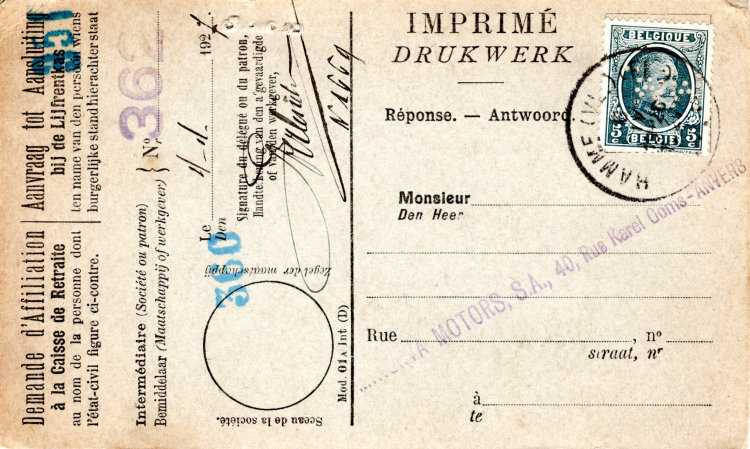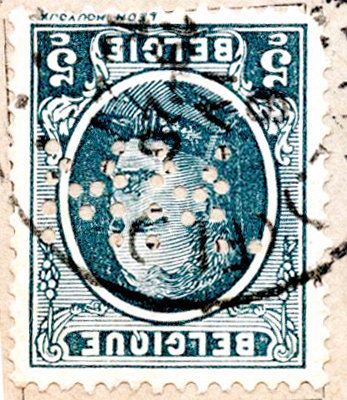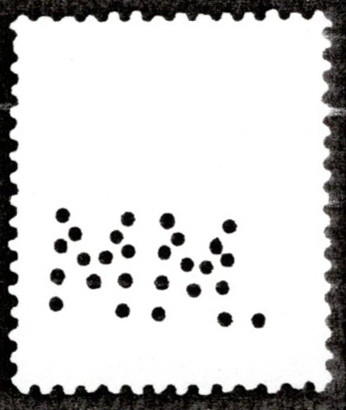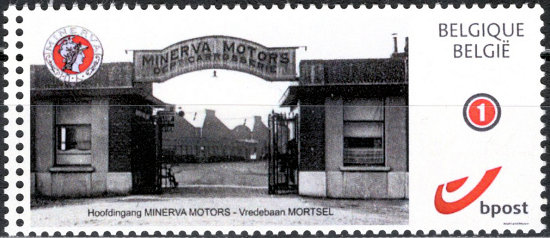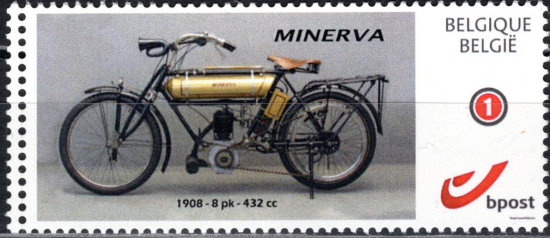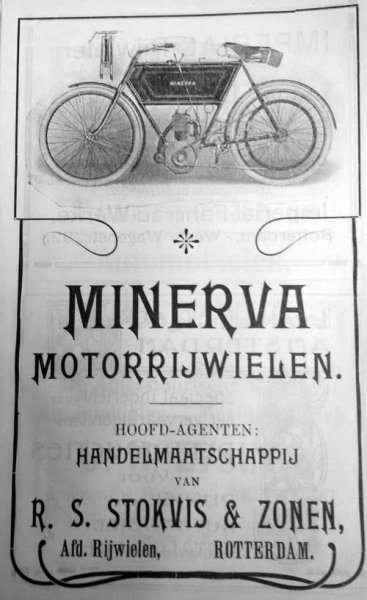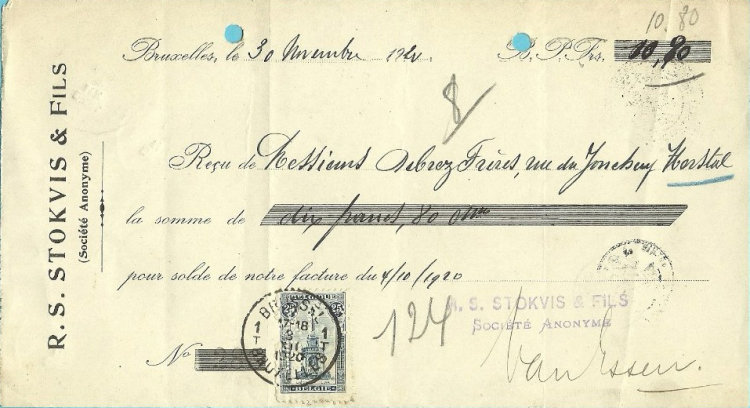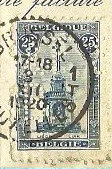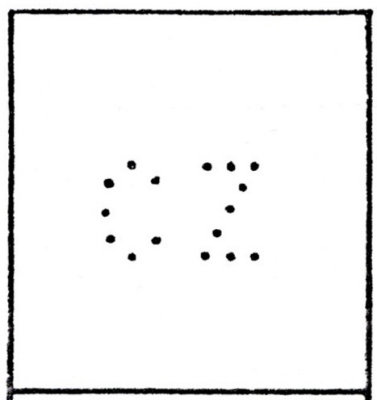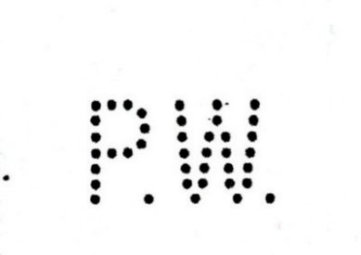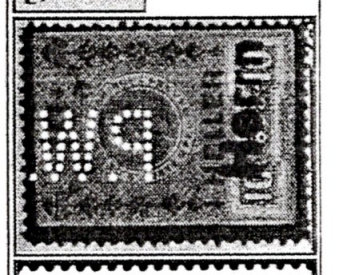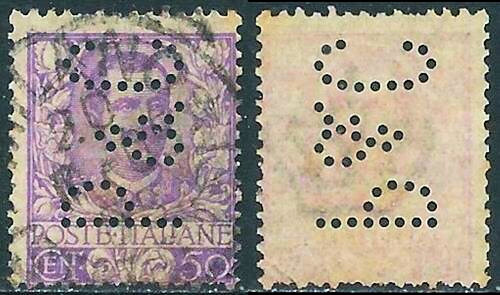Company perforations or PERFINSThe search for new unknown perfins to add to my collection continues unabated. The search does require some detective work, but my last visit to the Bondsbibliotheek in Houten yielded a few new copies. Belgium: |
The Minerva factory was based in Antwerp and has used two different perfins.
First a perfin MML was used, in the period 1909-1914. The perfin had 32 holes and also appears on German stamps. In 1921, well after the end of World War I, Minerva started using perfins again. For this purpose, the letter L was removed from the perforator of the first perfin, except for the first pen at the bottom left of the L, leaving a dot behind the second M. This perfin consisted of 27 holes.
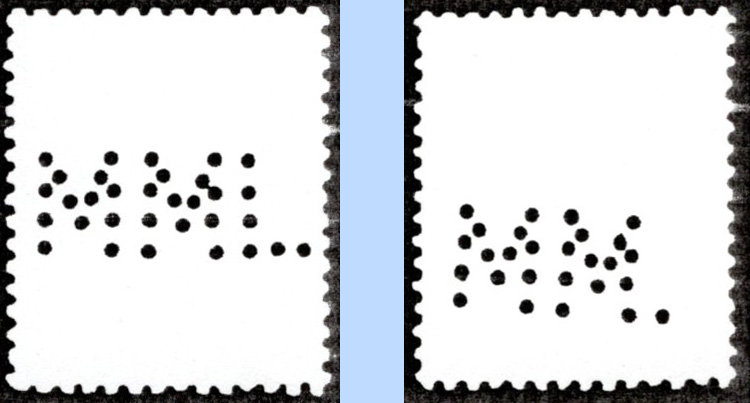
On the left type 1 with 32 holes, on the right type 2 with 27 holes
Stokvis & Fils S.A.:
In response to a question from our member Ad van Tiel, we have added to the list a perfin from Stokvis and Son Surabaya in 2021. At that time the conclusion was that this branch of Stokvis has not sold any motorcycles. That could be different for this new find of a Stokvis perfin.
When R.S. Stokvis started a business in cast ornaments and other hardware in the Netherlands in 1844, his eldest son worked in Brussels as a servant in the iron shop 'La Cloche'. This business had supplied the ironwork for the passages in Brussels. When his father was going to provide the passage in The Hague with ironwork, the son first tried to get his boss interested to deliver. Because the boss thought the distance was a bit far, Samuel Raphael made an offer himself, resulting in the establishment of his own business: the later R.S. Stokvis et Fils, 15-19, Diksmuidelaan in Brussels. Later Boulevard Barthélemy 32. Together with his father he started R.S. Stockvis and Son.
From 1912 up to 1926 a perfin has been used.
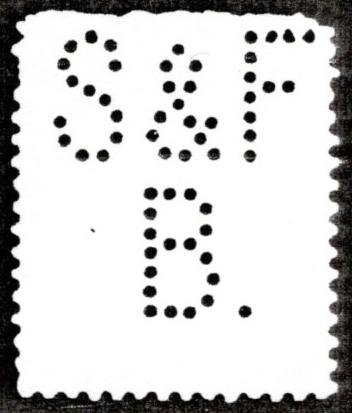
56 holes
Czechoslovakia:
CZ stands for Česká Zbrojovka, which means Czech Arms Factory. For a long time, the brand belonged to the Laurin & Klement (Škoda) concern. In 1931 the first motorcycles were built. The machines sold well: 5,000 were already sold in the first two years. They were equipped with a 73 cc single-cylinder two-stroke engine which was housed in a reinforced bicycle frame. The second version of 98 cc was also a success.
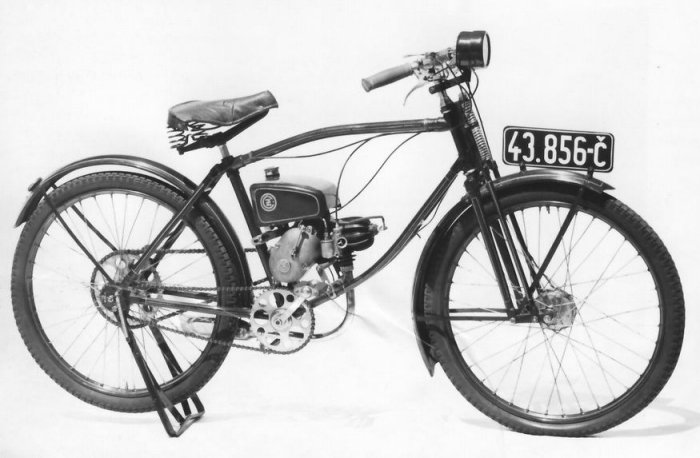
The first CZ motorcycle, the 73cc Kaktus
While searching for perfins I came across this one in an overview of Czech perfins. No description or years. Can it be a perfin from our motorcycle factory?
Austria:
Premier Werke A.G. (Premier Fahrrad & Maschinenfabrik AG), Eger, Cheb. Just before the First World War (1913), the Premier production was transferred from Nuremberg to Eger (Czechoslovakia). This factory also built 269 cc two-stroke and 346 and 498 cc four-stroke single cylinders with JAP and their own side and overhead valve engines.
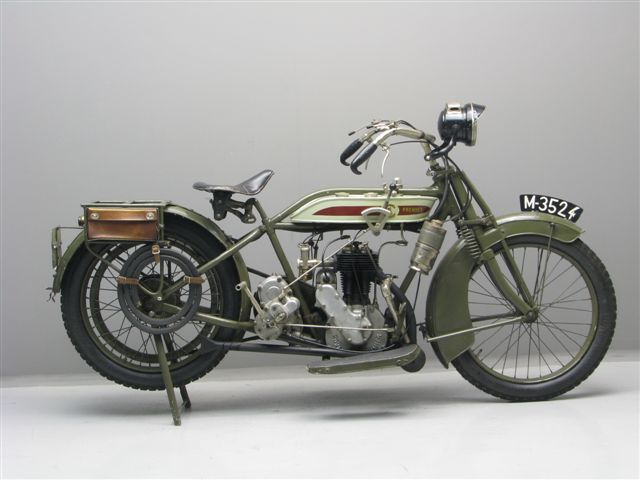
498cc Premier - 1915
The perfin consisted of 15 and 25 holes (including the points) and was used between 1899 and 1945.
|
Because motorcycles were built in Eger between 1913 and 1933, only perfins used in this period are valid in our collection.
Tyre manufacturers:
Italy:
Pirelli & C. Societes, Milan, for washing of rubber and gutta-percha. Gutta-percha is a material somewhat similar to rubber, but harder. The perfin was used from 1901 to 1922.
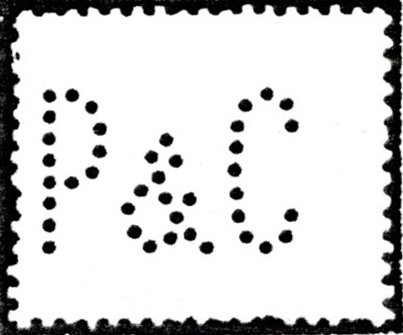
41 holes
Nico Helling
